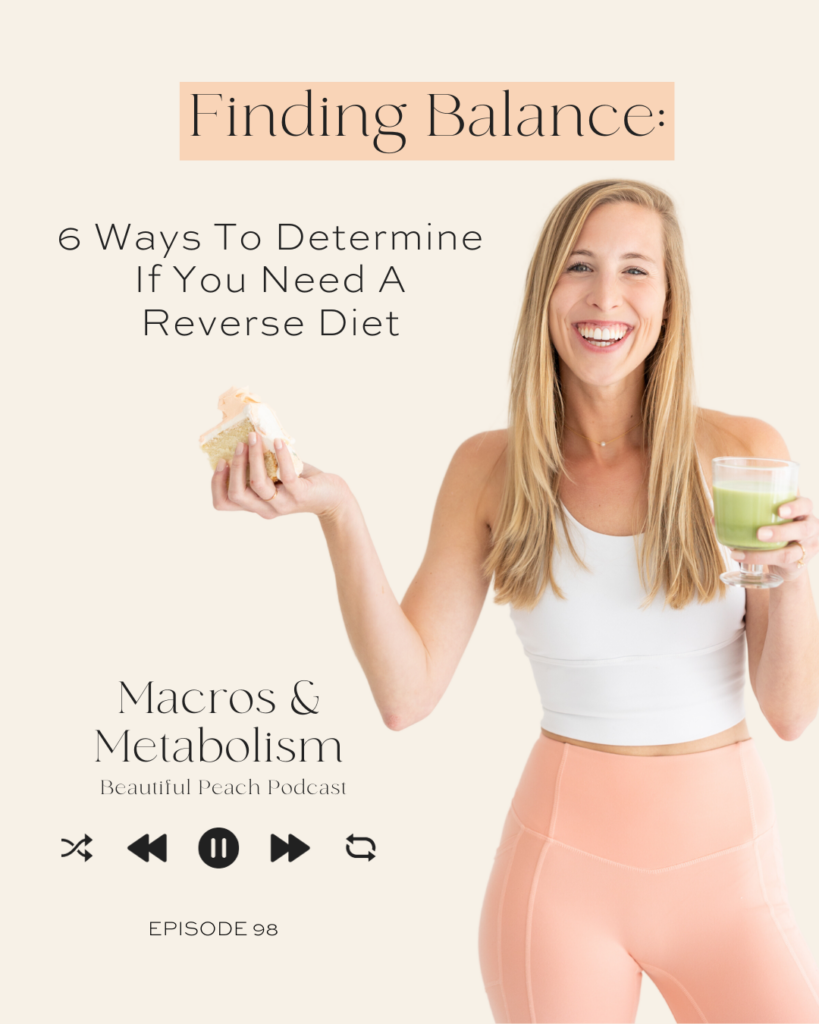

What is my beautiful, beautiful peach today’s episode? We are going to be talking through the top ways to determine if you need a reverse diet. If you are brand new to healing your metabolism for sustainable fat loss, also known as reverse dieting, go ahead and check out episode 91, “Low Calorie Dieting Slows Your Metabolism and Causes Weight Regain,” as well as episode 92, “Reverse Dieting 101: A Beginner’s Guide to Healing Your Metabolism.” Listen to those two first and then come back and listen to this episode.
Without further ado, let’s dive into six ways to determine if you need a reverse diet. Have you ever thought that maybe you just need to eat less and do more cardio every day to see changes? But you’re still stuck in a plateau. Well, the truth is that continuously cutting out food and doing more cardio is not the answer. If you find yourself in a plateau, it’s important to figure out if you actually need to do a reverse diet and heal your metabolism.
Crash dieting has created a record high population of women (and men) with completely shot metabolisms. This leaves us feeling stuck at a low calorie intake, terrified of weight regain, struggling with food guilt and binge eating, and having a negative relationship with food. It’s also led to spending countless time, energy, and money on crash dieting and different diet pills that lead nowhere. In fact, Americans spend over $30 billion each year on weight loss pills, supplements, and crash diets.
If you’ve restricted your calories in the past and haven’t properly healed your metabolism, there’s a strong chance that your metabolism is still adapted to that lower calorie intake. Even if it was 10 or 20 years ago, weight regain may have occurred when you stopped the diet. This is why a reverse diet may still be necessary.
Skipping meals, whether intentional or not, can also contribute to a slowed metabolism. A calorie deficit is a calorie deficit, and if you’re consistently skipping meals or cutting out food, you’re still putting yourself in a calorie deficit. This can lead to weight regain when you finally eat, as well as digestive issues and intense cravings.
If you find yourself experiencing intense carb or food cravings due to restrictive eating, it’s a sign that your body is in survival mode and trying to get the fuel it needs. This is another indication that a reverse diet may be necessary.
In conclusion, if you’re struggling with weight regain, skipping meals, experiencing cravings, or have a history of low calorie intake, it may be time to consider a reverse diet. Properly healing your metabolism is key to sustainable fat loss and a healthy relationship with food. Remember to listen to episodes 91 and 92 for more information on reverse dieting.